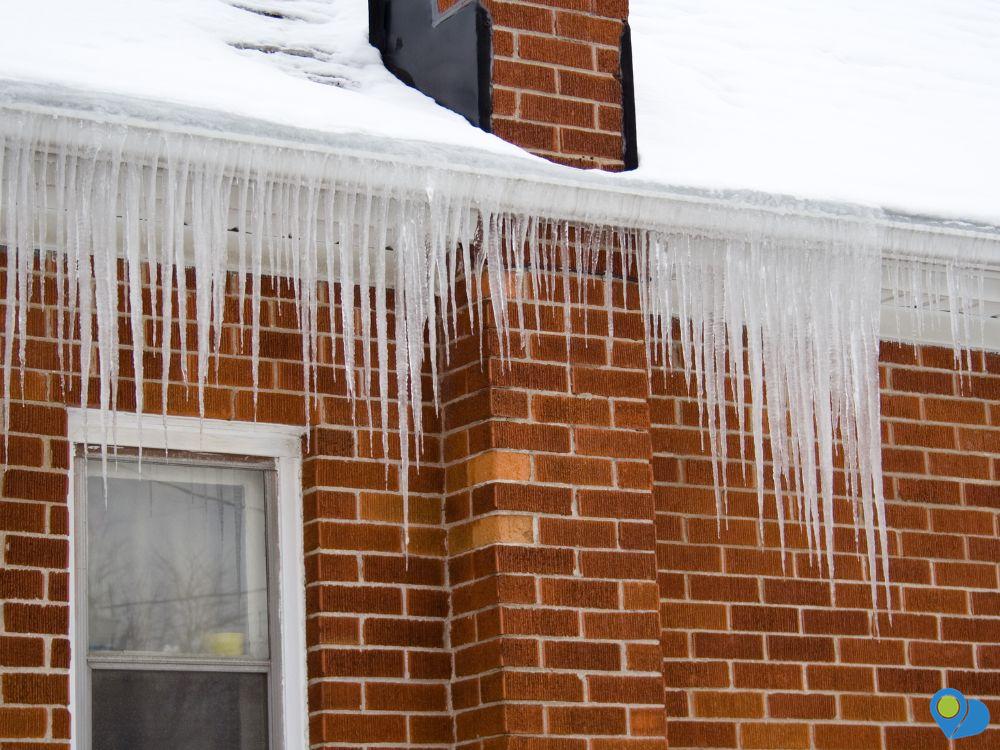Preventing Frozen Pipes

Probably the biggest fear a homeowner faces in winter is having frozen pipes. With the impending arctic weather approaching, Oklahomans are concerned about freezing temperatures. Taking preventative measures can save you tens of thousands of dollars on burst pipes! It’s starting out to be a cold winter, Shawnee, so take these precautions now!
Where the trouble lies
“Some pipes are more prone to freezing than others because of their location in the home,” explains Paul Abrams, spokesman for Roto-Rooter.
Pipes most at risk for freezing include:
- Exposed pipes in unheated areas of the home.
- Pipes located in exterior walls.
- Any plumbing on the exterior of the home.
What everyone should do to prepare
- Keep your furnace at 68-72 degrees minimum during extreme cold snaps even if you won’t be home.
- Open cabinet doors underneath sinks to allow warm air to circulate around your pipes.
- Drip faucets and showers once temps plummet and keep them dripping until temps warm up—often this is the most important thing besides keeping your home heated to prevent your pipes from bursting.
- Call your insurance agent to make sure you’re covered for any interior damage in case a pipe does burst.
- In extreme cold or if you’re leaving town, consider shutting off water to your whole home. Once you shut off the water, turn on all faucets/showers/tub spouts so water can drain out of the lines, flush all toilets and keep the water faucets open while gone.
- If you’re a landlord, contact every tenant to make sure they do the above as well.
Preventative measures for outside
A frozen garden hose can cause more damage than a broken hose; it can actually burst an interior pipe. When the water in the hose freezes, it expands, increasing pressure throughout the whole plumbing system. As part of your regular seasonal maintenance, garden hoses should be disconnected from exterior spigots, drained, and stored before the first hard freeze.
If you don’t have frost-proof spigots, close the interior shut-off valve leading to that spigot, open and drain the spigot, and install an exterior faucet/spigot insulator (you can buy these online at Amazon). They cost only a couple bucks and are worth every penny. Don’t forget, outdoor kitchens need winterizing, too, to prevent damage.
Exposed interior plumbing
Exposed pipes in a basement are rarely in danger of freezing because they are in a heated portion of the home. As you know, here in Oklahoma, we have very few basements. But plumbing pipes in an unheated area, such as an attic, crawl space, and garage are at risk of freezing.
Often, inexpensive foam pipe insulation is enough for moderately cold climates. For severe climes, opt for wrapping problem pipes with thermostatically controlled heat tape (from $50 to $200, depending on length), which turn on at certain minimum temps.
Under-insulated walls
If pipes traveling in exterior walls have frozen in the past (tell-tale signs include water damage, mold, and moisture build up), it’s probably because of inadequate or improperly installed insulation. It might well be worth the couple hundred dollars to open up the wall and beef up the insulation.
“When nothing else works, say for a northern wall in a really cold climate, the last resort is to reroute a pipe,” notes Abrams. Depending on how far the pipe needs to be moved—and how much damage is caused in the process—this preventative measure costs anywhere from $700 on up. Of course, putting the room back together is an extra cost.
Heading south for the winter?
For folks leaving their houses for an extended period of time, or even out of town for just a few days in winter, additional preventative measures must be taken to adequately protect the home from frozen pipes.
- Make sure the furnace is set no lower than 68 degrees.
- Shut off the main water supply and drain the system by opening all faucets and flushing the toilets.
In extreme situations (vacation home in a bitterly cold climate), Abrams recommends having a plumber come to inspect the system, drain the hot water heater, and perhaps replace the water in traps and drains with nontoxic antifreeze.
Did your pipes burst?
Here’s a list of trusted plumbers in the Shawnee area –
- Southeastern Plumbing (Keith Kuykendall), 405-273-3237
- Complete Plumbing (Steve Chlouber) 405-878-6012
- Jimmy B Quick Plumbing (James Gawf) 405-765-6545
Source: HouseLogic





